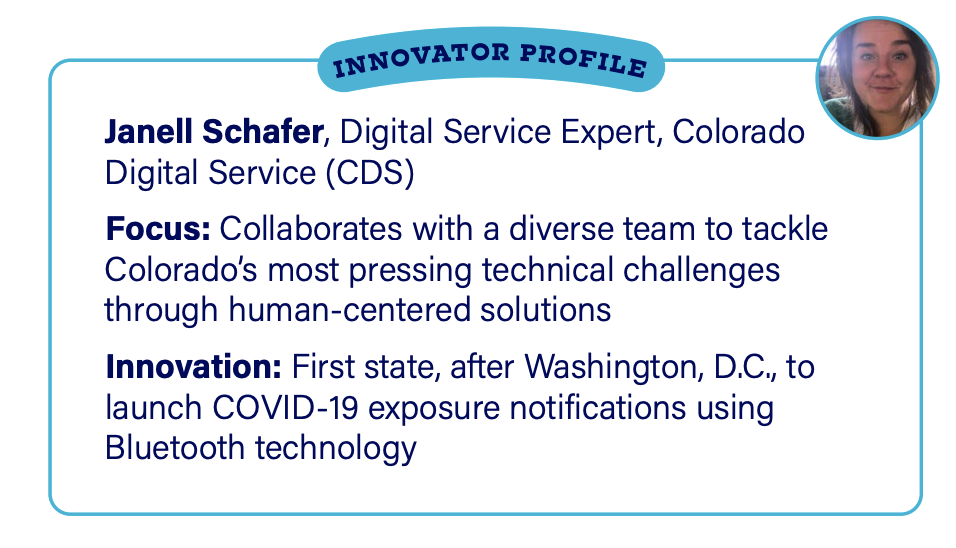Depending on the nature of your work, your job description may not tell the full story of your reach. That’s both the challenge and beauty of what makes problem-solving impactful and rewarding for the cross-functional group at Colorado Digital Service (CDS).
The team joined forces with the Colorado Department of Public Health and Environment to launch CO Exposure Notifications. The free and voluntary service, developed in partnership with Google and Apple, notifies users of possible exposure to COVID-19. Users opt-in with an Android or iPhone device, and the phones share anonymous tokens with other CO Exposure Notifications users via Bluetooth.
We extrapolated key details about the project from Janell Schafer, a Digital Service Expert within CDS, including what was vital to success and how an unconventional yet healthy perspective on failure worked in CDS’ favor.
Embrace the power of embedding
“That concept of embedding was really crucial to our success because that allowed us to champion and put forward technology in service of public health,” she said.
Embedding is commonplace for government digital services teams and involves them being hands-on and working alongside partner agencies. Whether CDS was designing or building, the work was centered on the mission of that agency and the diverse community it serves.
Partner with and become a mentor state
In addition to working closely with Apple and Google, CDS also partnered with Washington, D.C., Canada, Germany, Virginia and Ireland to glean lessons learned from implementing other types of exposure notifications technology. But they didn’t stop there.
Armed with added knowledge from their own experience, Colorado became a mentor state, sharing insights with California, Maryland and Massachusetts to get their programs running.
“They’ll share their experiences openly and candidly, so you can learn and feel like you have the support as you’re making these tough decisions,” Schafer said of fellow mentor states.
Redefine failure through iterative improvements
The team improved and modified app features to adapt to users’ needs and respond to the changing public health crisis in real time. Initially, the state saw a 98.2% increase in user engagement. A year later, the second improvement showed a 34% increase.
“When we think about failing, it’s something that doesn’t serve the community, or those that need it,” Schafer said. “By tying that definition of failure to our actual community, I think it makes us able to process with our partners more holistically.”
With the exposure notifications, the team realized early on that people who tested positive had trouble using the system to manually report their positivity status. Once the team put an automated script in place, it became easier for people to confirm a positive test and overall usage increased.
“We did get some things wrong, but they weren’t a failure,” Schafer said. “It was an opportunity to improve.”






Leave a Reply
You must be logged in to post a comment.